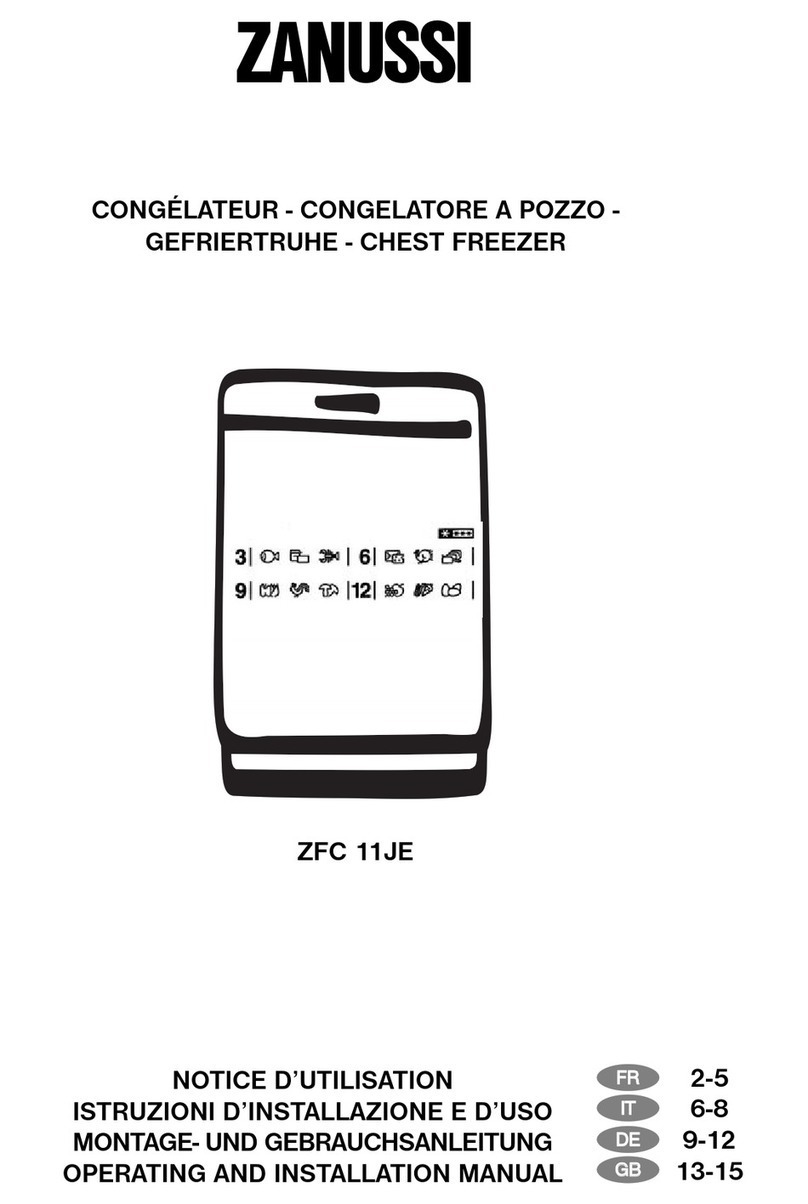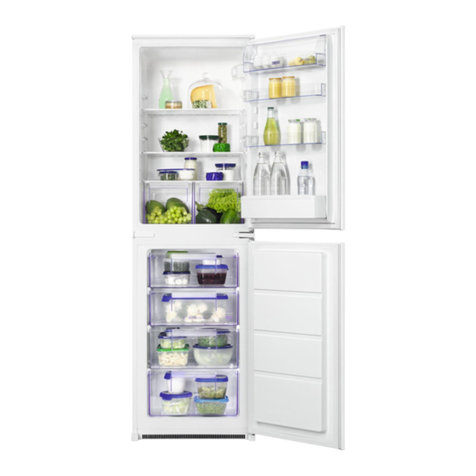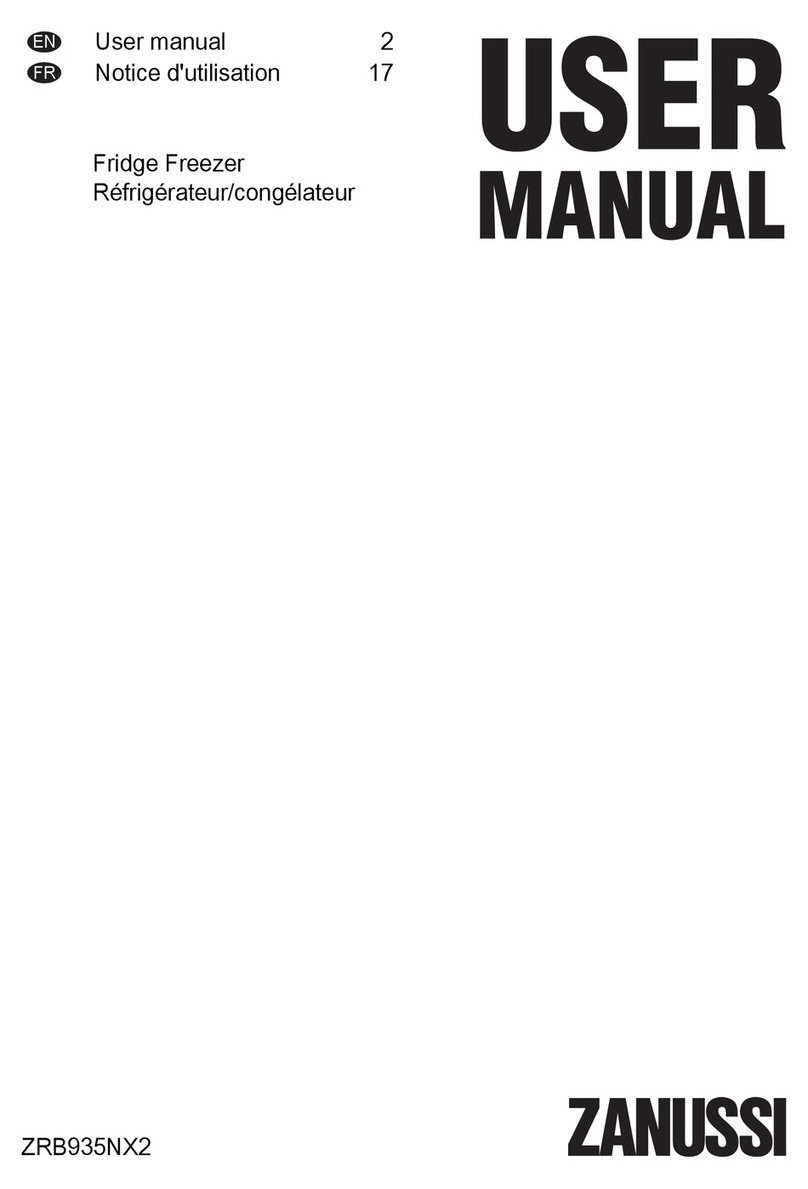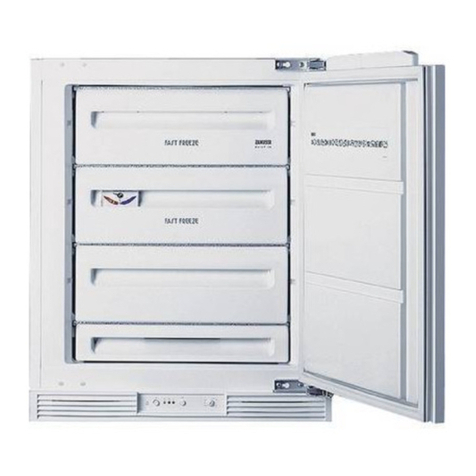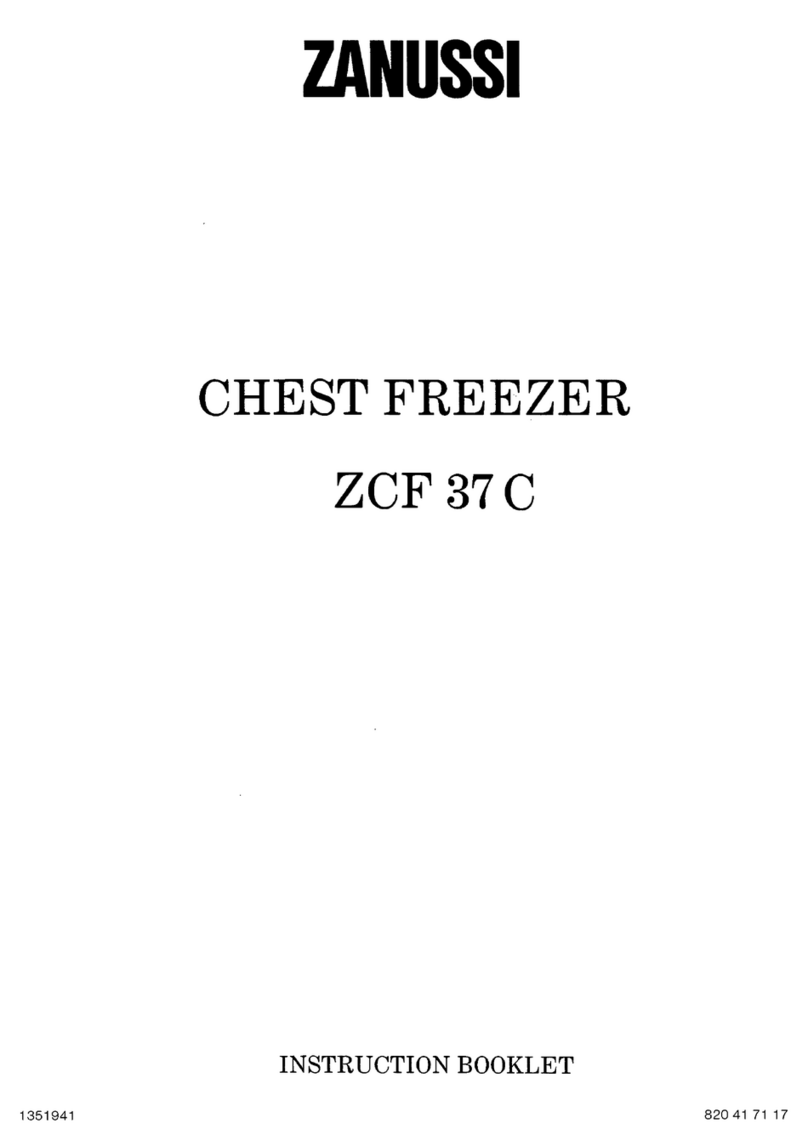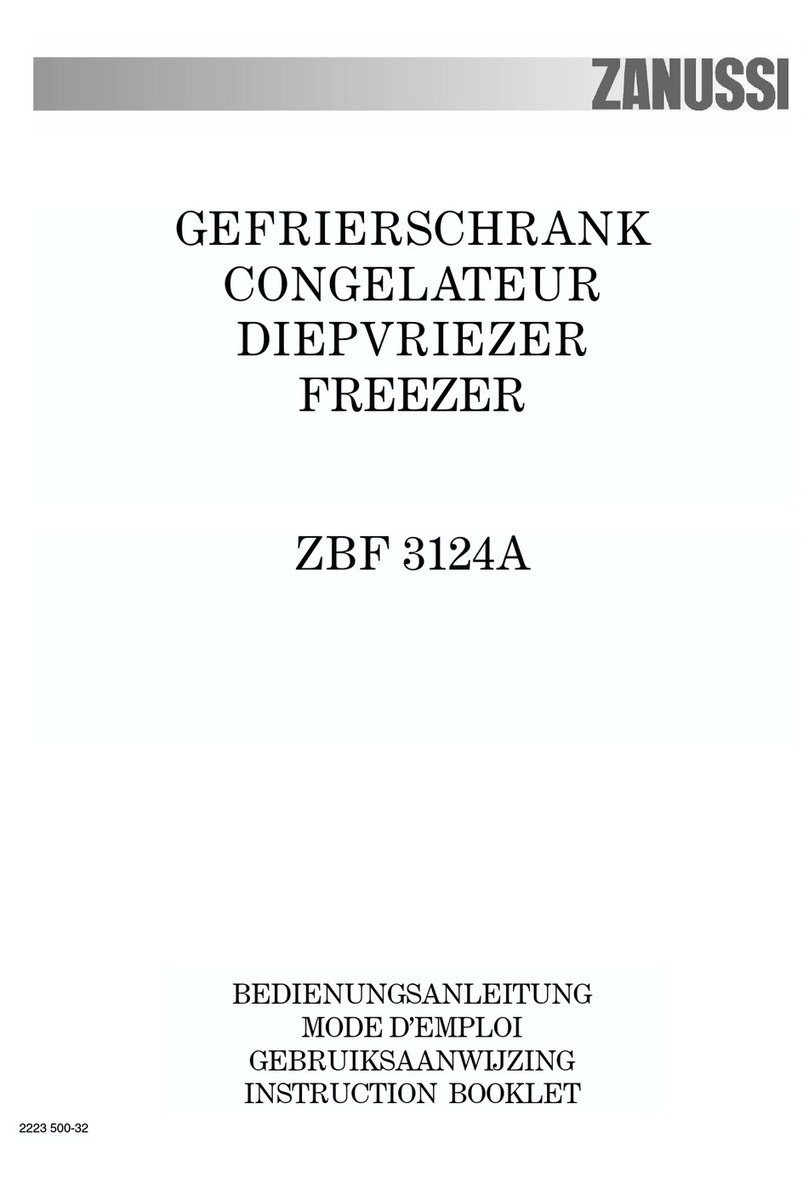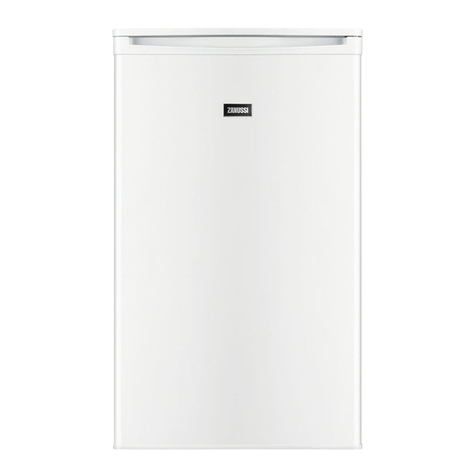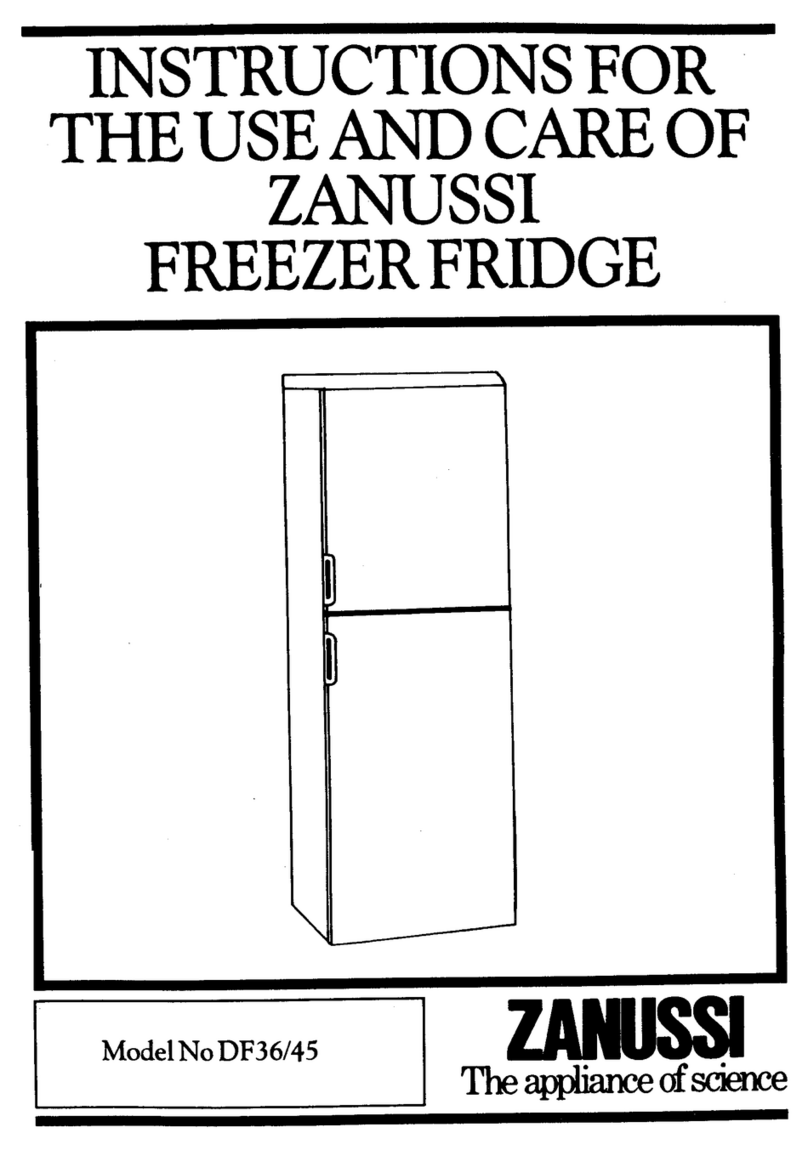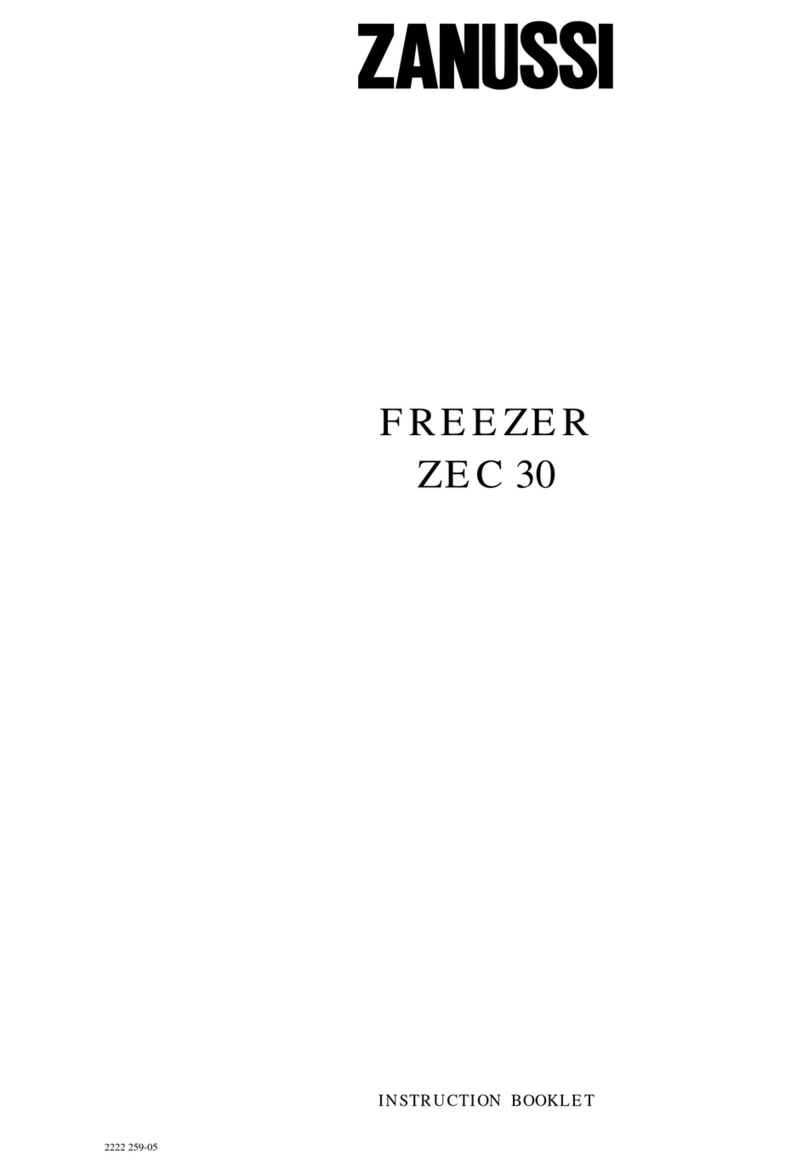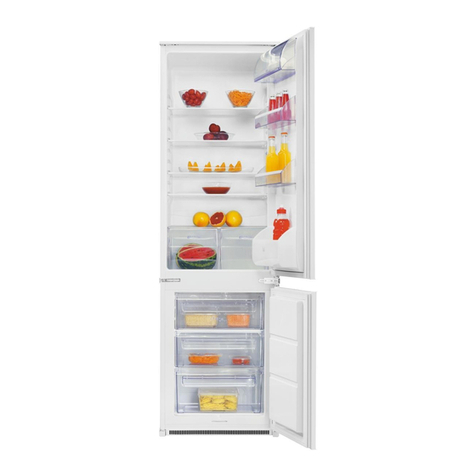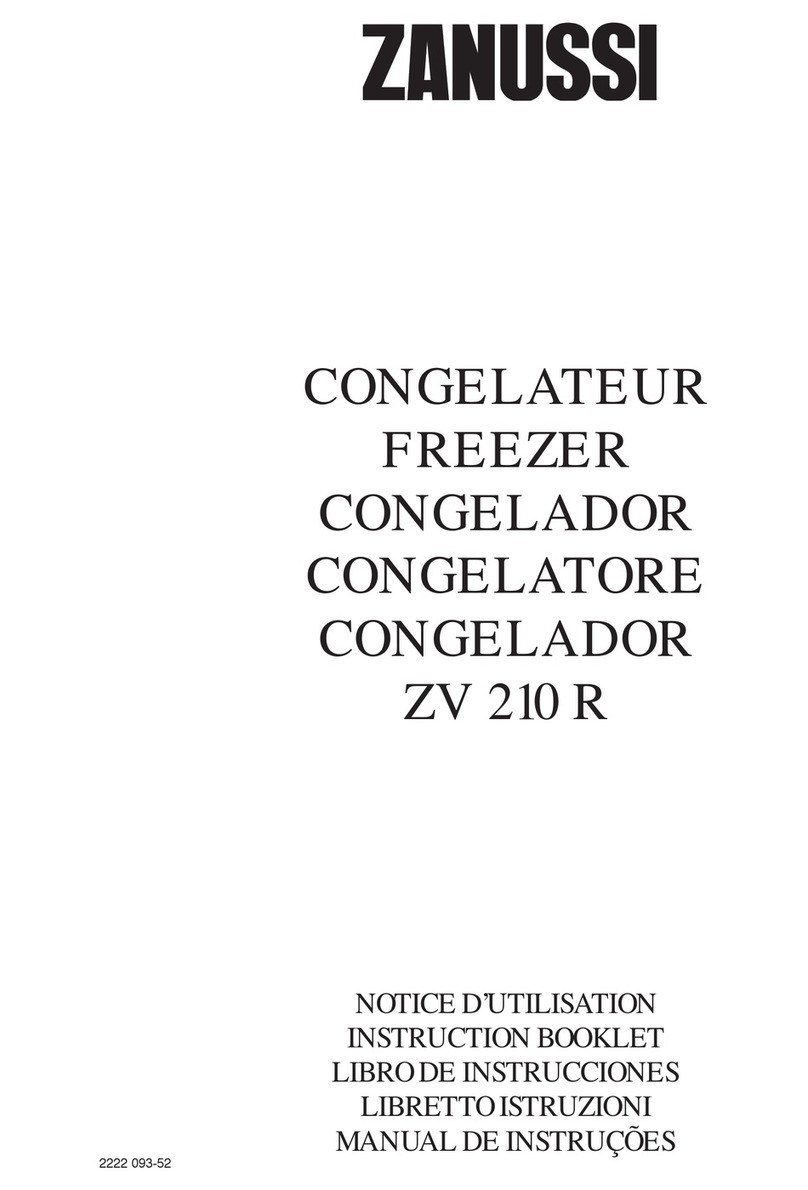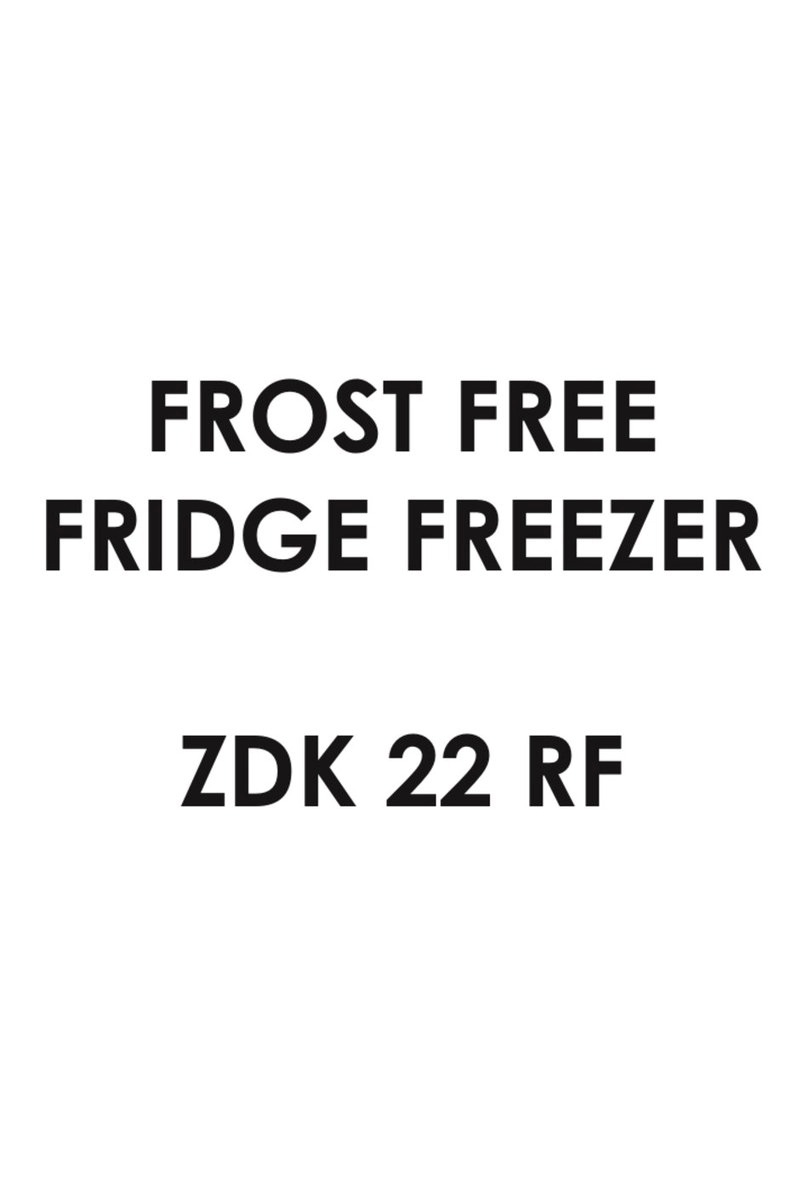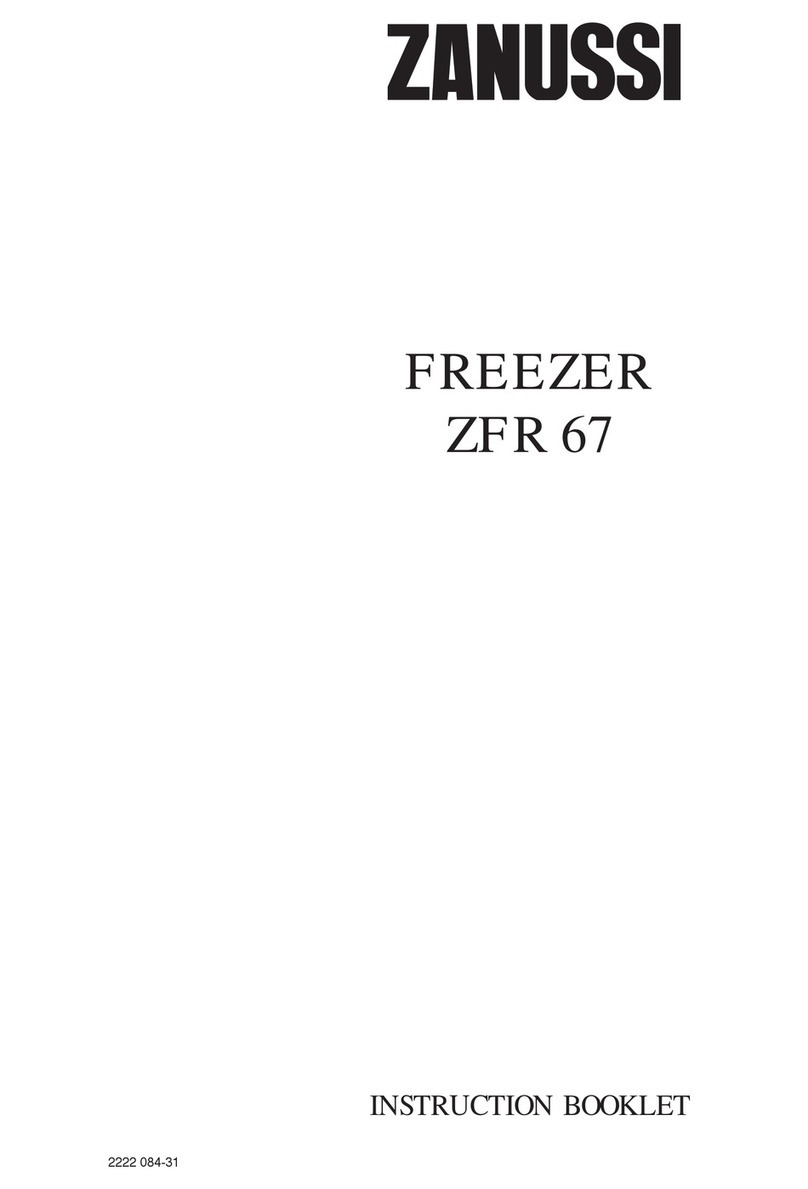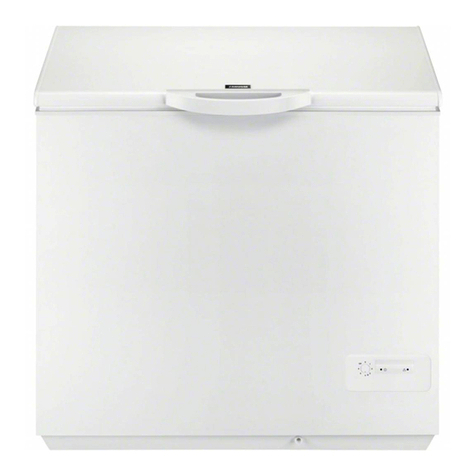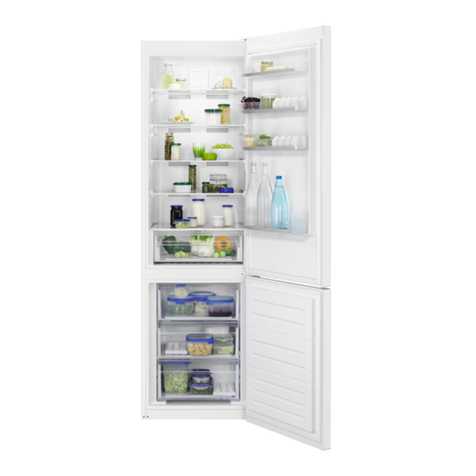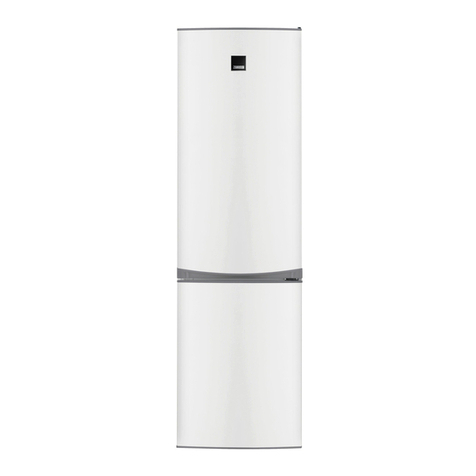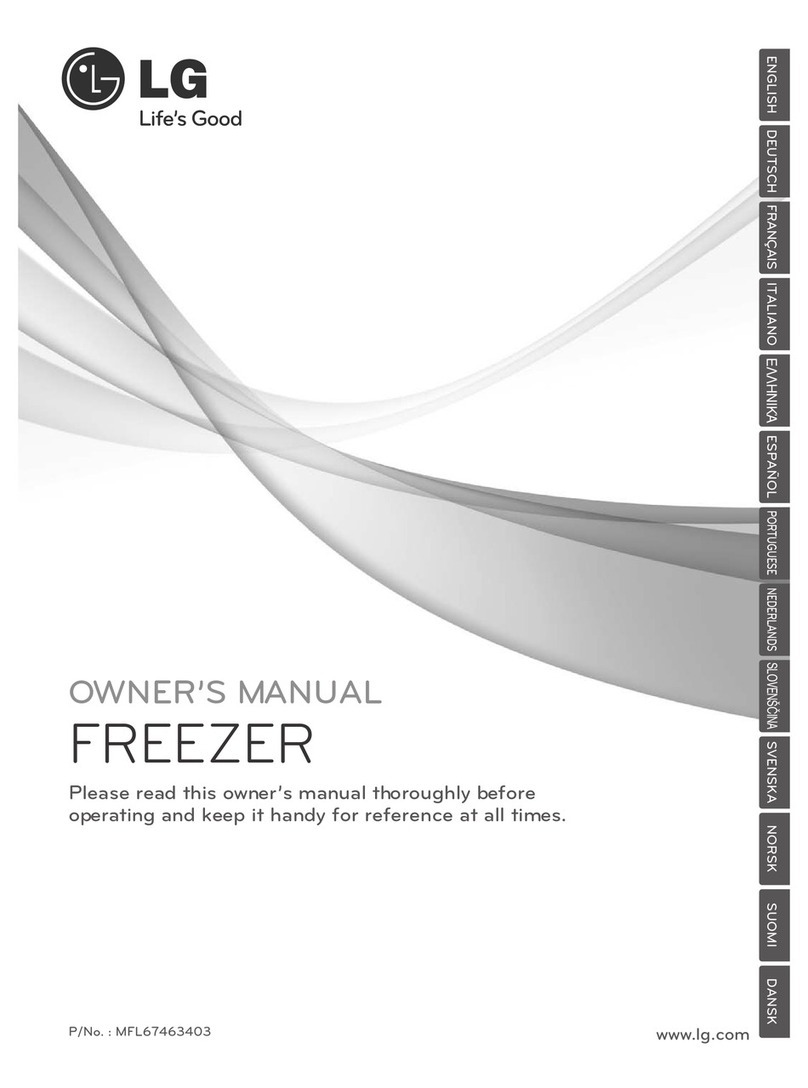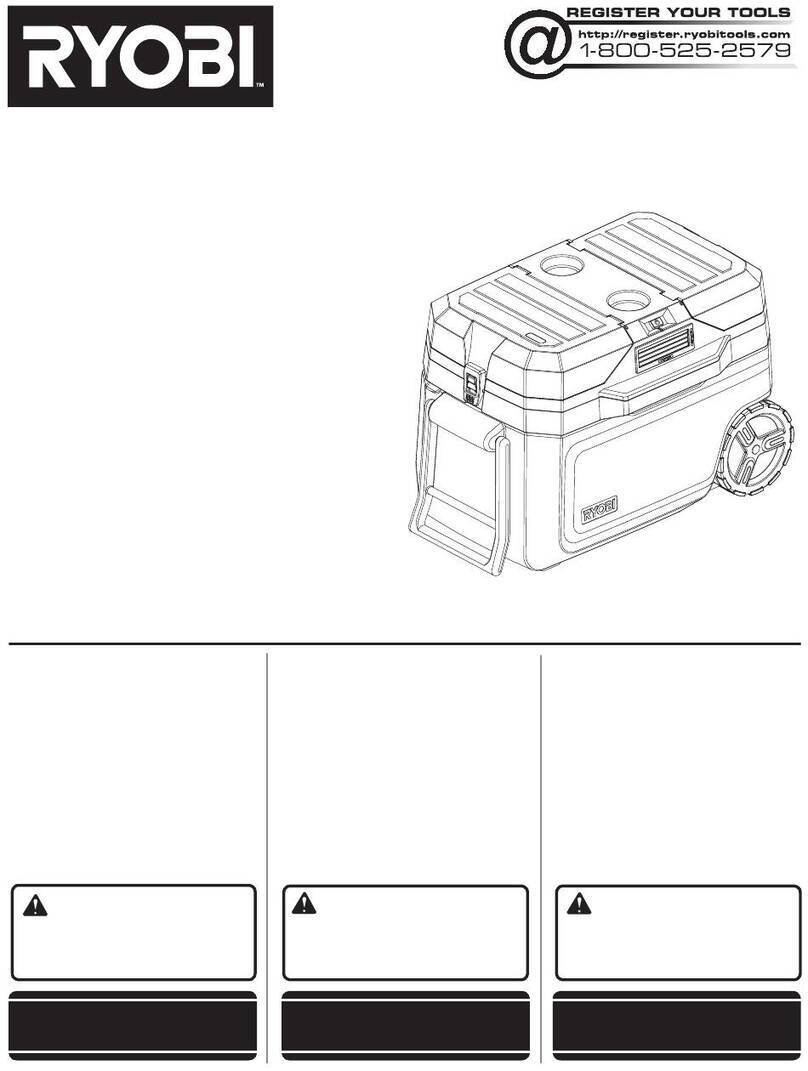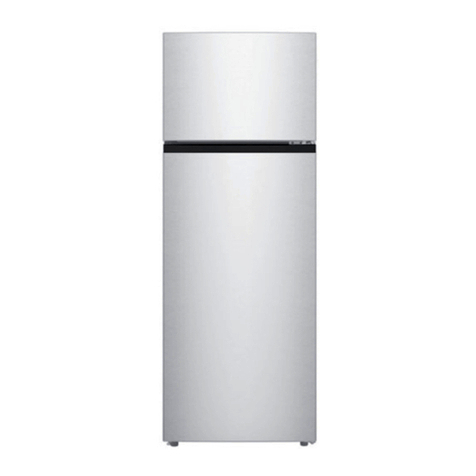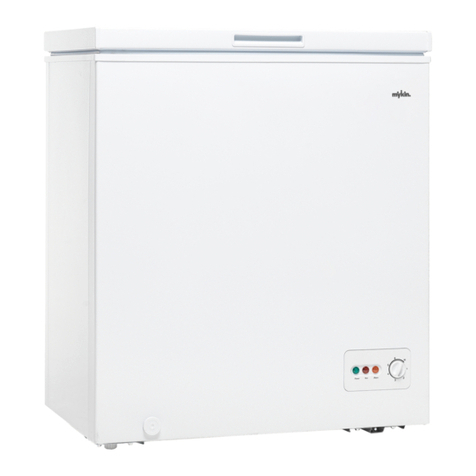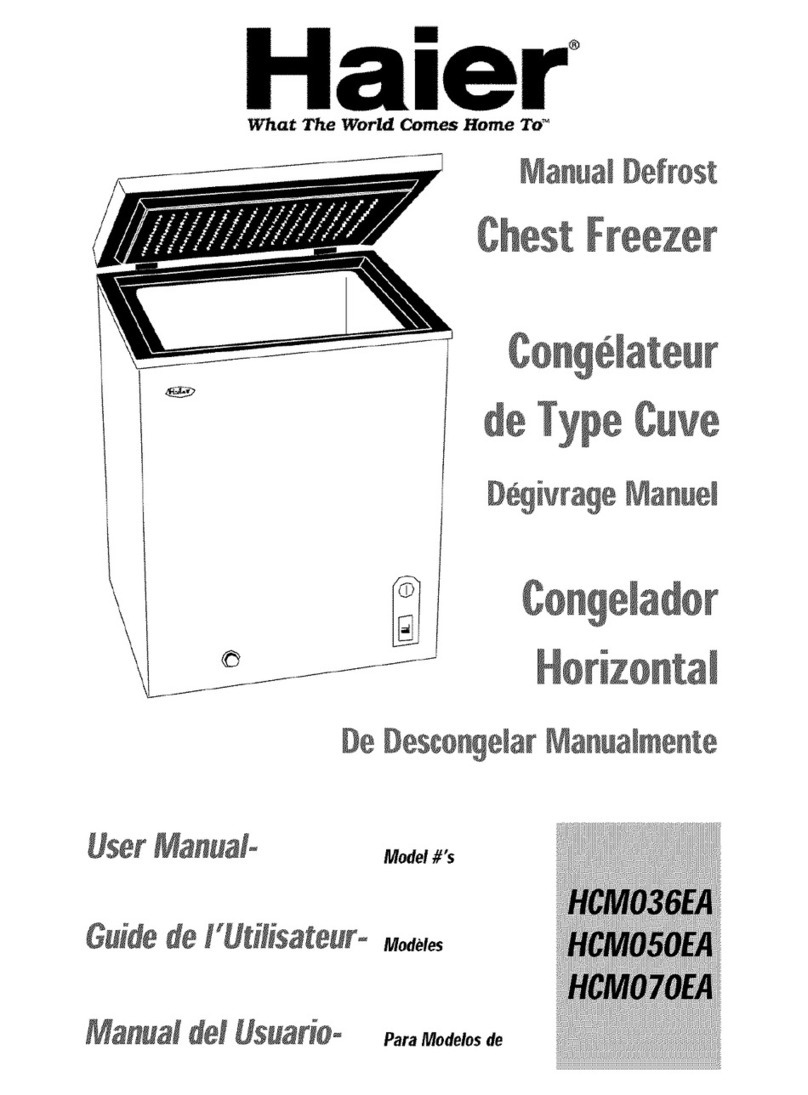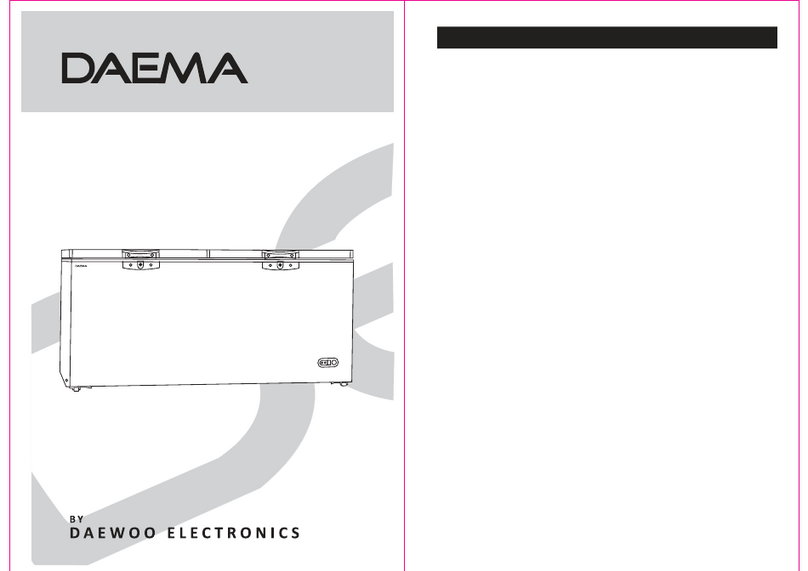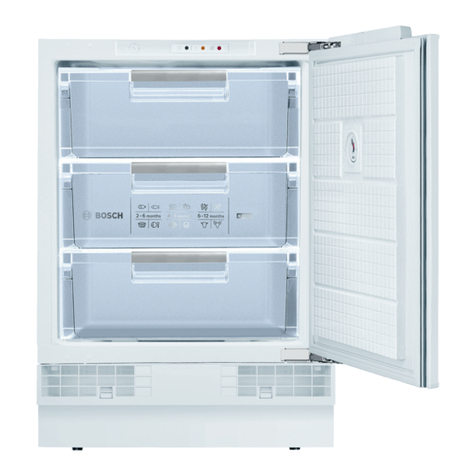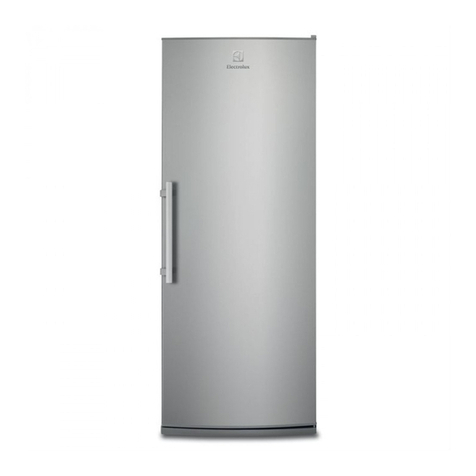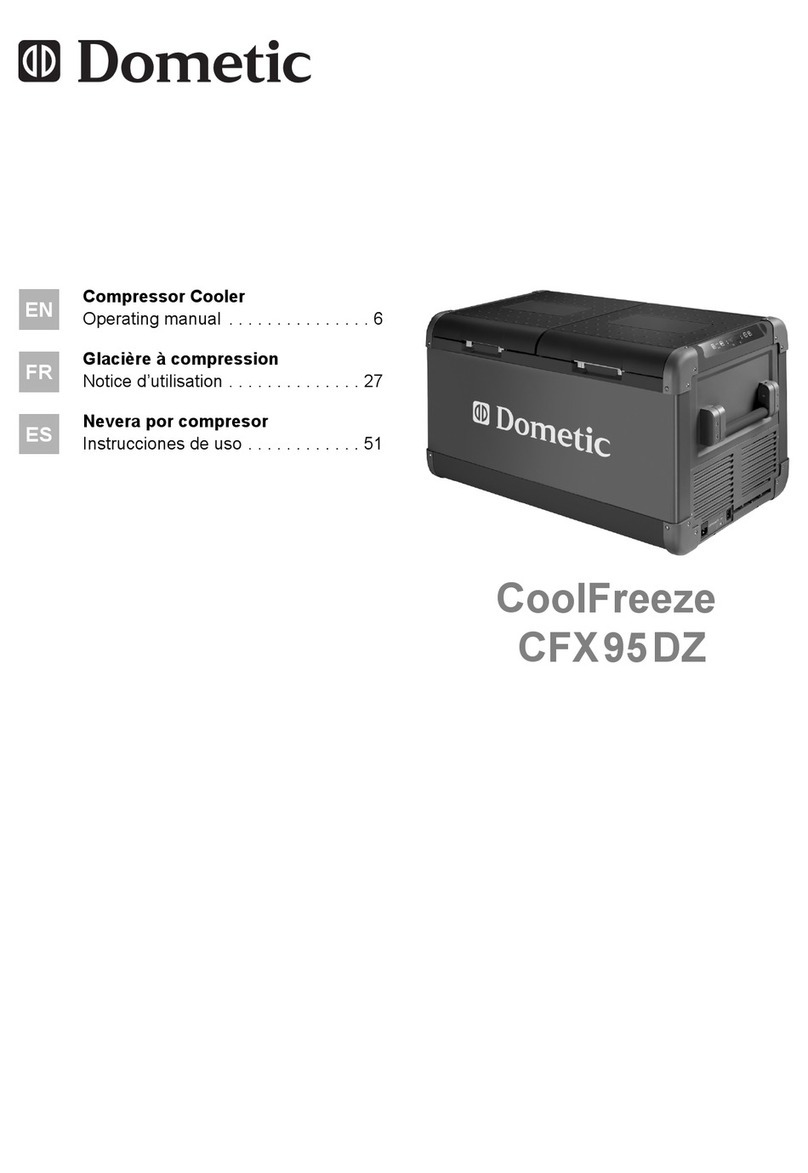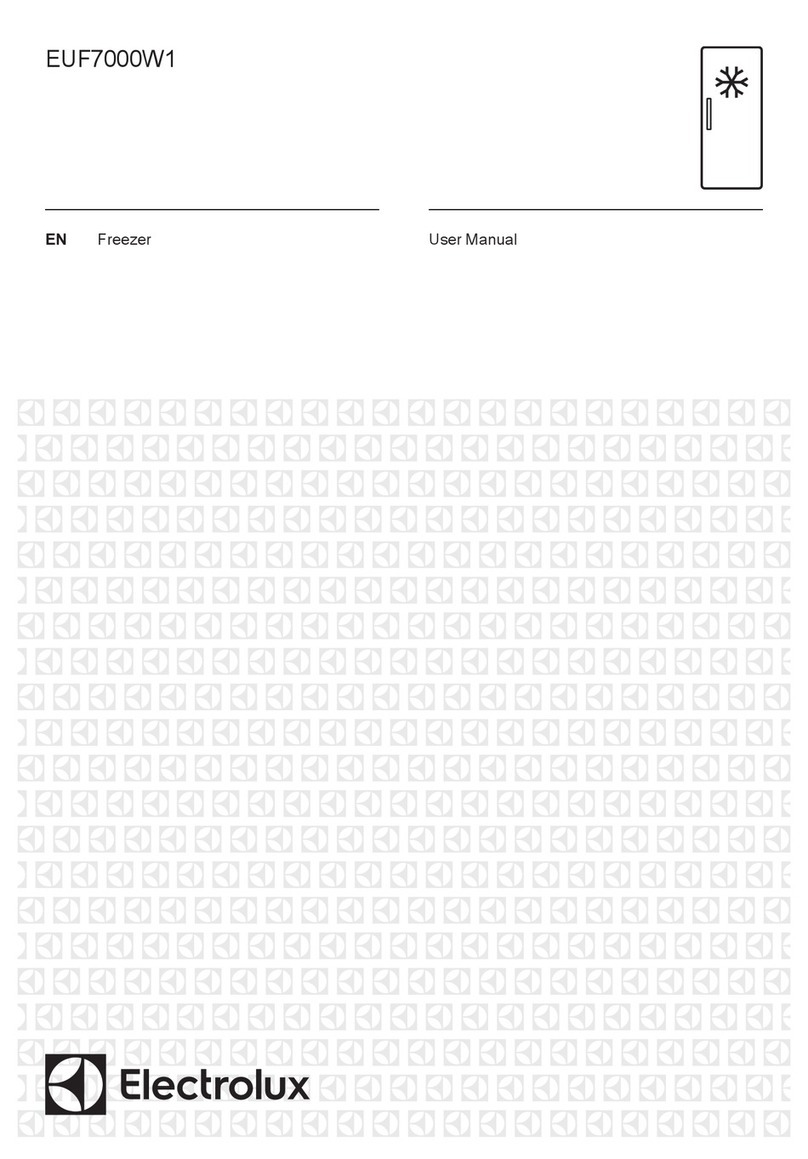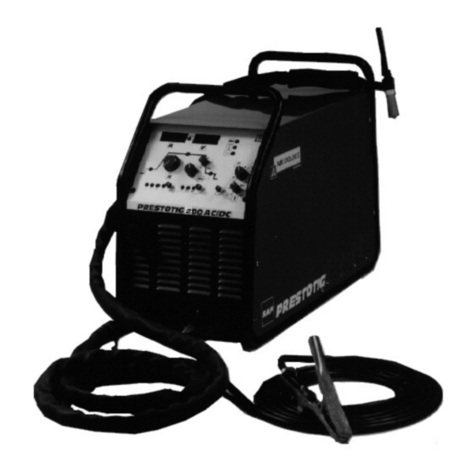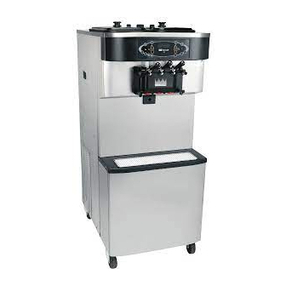23
IISSTTRRUUZZIIOONNII
AANNTTIIIINNFFOORRTTUUNNIISSTTIICCHHEE
DDIIRREETTTTIIVVEE EEDD AAVVVVEERRTTEENNZZEE
Le presenti avvertenze vengono fornite onde migliorare
il livello di si urezza, quindi è opportuno leggerle
attentamente prima di pro edere allinstallazione ed
alluso del ongelatore.
NNOOTTAA !!
EE ddii vviittaallee iimmppoorrttaannzzaa uussttooddiirree sseemmpprree qquueessttee
iissttrruuzziioonnii oonn iill oonnggeellaattoorree.. NNeell aassoo hhee qquueessttaa
aappppaarreehhiiaattuurraa vveennggaa vveenndduuttaa oo eedduuttaa aadd uunn aallttrroo
uutteennttee,, ooppppuurree nneell aassoo vvooii ttrraasslloohhiiaattee sseennzzaa
ppoorrttaarrvveelloo ddiieettrroo,, ddoovveettee oonnttrroollllaarree hhee qquueessttee
iissttrruuzziioonnii sseegguuaannoo sseemmpprree iill oonnggeellaattoorree,, ddii mmooddoo hhee
iill nnuuoovvoo uutteennttee ppoossssaa lleeggggeerrllee ee qquuiinnddii uussaarree
lleelleettttrrooddoommeessttiioo iinn mmooddoo oorrrreettttoo..
Questo ongelatore va usato es lusivamente per
ongelare e onservare alimenti.
Questa appare hiatura va adoperata
es lusivamente da persone adulte. Non permettete
he i bambini manipolino i tasti dei omandi nè
gio hino in altro modo on il ongelatore.
Lalla iamento del ongelatore alla rete elettri a va
sempre eseguito da un elettri ista autorizzato o da
altra persona on preparazione spe ifi a.
Non tentate mai di riparare il ongelatore da soli.
Infatti le riparazioni eseguite da persone non
ompetenti in materia possono provo are lesioni a
persone o gravi disfunzioni nellappare hio.
Per lassistenza te ni a di questo elettrodomesti o
i si deve sempre rivolgere ad una ditta autorizzata
e si devono usare es lusivamente pezzi di ri ambio
originali. Far riferimento al paragrafo Condizioni di
garanzia e servizio assistenza te ni a.
E peri oloso alterare le aratteristi he te ni he di
questa appare hiatura, ome pure effettuare
qualsiasi altra modifi a sul ongelatore stesso.
Assi uratevi he il ongelatore non venga
posizionato sopra un avo della rete di
alimentazione.
Non ri ongelate mai alimenti he siano già stati
s ongelati.
Attenetevi s rupolosamente alle istruzioni per lo
sto aggio. Vedere il paragrafo Consigli utili.
Questo ongelatore ontiene an he al uni
omponenti he, durante il normale funzionamento,
possono ris aldarsi. Quindi, bisogna garantire
sempre unadeguata ventilazione. Nel aso di
s arsa ventilazione, si possono verifi are guasti
he possono portare al deterioramento degli
alimenti. Vedi il paragrafo Installazione.
Allinterno del ongelatore vi sono delle tubature per il
passaggio del refrigerante. Se questi tubi vengono
tagliuzzati o forati, il ongelatore subirà dei danni
irreparabili e gli alimenti onservati si deterioreranno.
Quindi, per rimuovere le in rostazioni o le lastre di
ghia io, non si devono usare utensili a uminati. Infatti
le in rostazioni vanno tolte on lapposito ras hietto in
dotazione e, per eliminare il ghia io, non si deve
battere sui lati del ongelatore, ma bensì sbrinare
lappare hio. Vedere al paragrafo Manutenzione.
Non mettete bibite in ongelatore. Bottiglie e lattine
he ontengono a ido arboni o o bevande
frizzanti possono fa ilmente esplodere e quindi
danneggiare il ongelatore.
Questo elettrodomesti o è piuttosto pesante. Fate
attenzione quando lo spostate.
Se al ongelatore appli ate una serratura onde
prevenire manomissioni da parte dei bambini,
abbiate la ortezza di ustodirne la hiave sempre
ben al di fuori della loro portata ed in un luogo
dis osto dal ongelatore stesso.
Prima di disfarvi di un ve hio appare hio
ontrollate sempre he eventuali lu hetti o
serrature siano messi fuori uso, onde prevenire
in identi ed evitare il ris hio he qual he bambino
si possa hiudere dentro.
Non addentate i ghia ioli appena tirati fuori dal
ongelatore: potrebbero provo are fenomeni di
ongelamento.
AAssssiiuurraarrssii hhee llaa ssppiinnaa nnoonn vveennggaa sshhiiaaiiaattaa oo
ddaannnneeggggiiaattaa ddaall ffiiaannoo ppoosstteerriioorree ddeell
ffrriiggoorriiffeerroo//oonnggeellaattoorree..
- Una spina danneggiata potrebbe surris aldarsi e
ausare un in endio.
NNoonn oollllooaarree ooggggeettttii ppeessaannttii oo iill
ffrriiggoorriiffeerroo//oonnggeellaattoorree sstteessssoo ssoopprraa iill aavvoo
eelleettttrriioo..
- Esiste il ris hio di orto ir uito e in endio.
NNoonn rriimmuuoovveerree iill aavvoo eelleettttrriioo pprreemmeennddoo ssuullllaa ssuuaa
ssoommmmiittàà,, ssppeeiiaallmmeennttee qquuaannddoo iill
ffrriiggoorriiffeerroo//oonnggeellaattoorree éé ssttaattoo ttoollttoo ddaallllaa ssuuaa sseeddee..
- Un danno al avo elettri o potrebbe ausare un
orto ir uito, un in endio e/o uno sho k
elettri o.
- Se il avo elettri o risulta danneggiato deve
essere sostituito da personale te ni o qualifi ato.
SSee llaa pprreessaa ddeellllaa ssppiinnaa nnoonn éé ssiiuurraa,, nnoonn iinnsseerriirree llaa
ssppiinnaa..
- Esiste il ris hio di sho k elettri o o in endio.
SSOOSSTTAANNZZAA RREEFFRRIIGGEERRAANNTTEE
Lappare hio nella ir olazione della sostanza
refrigerante ontiene un gas naturale
denominato Isobutan (R600a), avente una elevata
tolleranza per lambiente, il quale è tuttavia infiammabile.
Osservare durante il trasporto e linstallazione
dellappare hio he non venga danneggiato al un
elemento della ir olazione della sostanza
refrigerante.
In aso di danneggiamenti alla ir olazione della
sostanza refrigerante:
evitare assolutamente fiamme libere e fonti
in endianti;
provvedere ad una buona aerazione del lo ale in
ui si trova lappare hio.
IT
6
GB
Climate Ambiente temperature
category from ... to
SN +10 to + 32 °C
N +16 to + 32 °C
ST +18 to + 38 °C
T +18 to + 43 °C
If the freezer has been handled standing on end it
should be allowed to stand in normal position for
about 12 hours before switching it on.
Please ensure that when the appliance is installed it
is easil accessible for the engineer in the event of a
breakdown.
S ITCHING ON (2)
Before switching on, the freezer should be cleaned
inside. See under Maintenance.
Set the thermostat button in middle position. Allow the
freezer to run for several hours before placing food inside.
ELECTRICAL REQUIREMENTS
Before switching on, make sure that the voltage of our
electricit suppl is the same as that indicated on the
rating plate, located inside the lid.
arning:
This appliance must be earthed.
this appliance complies with the following EC
Directives:
- 73/23/EEC of 19. 02. 1973 - Low-Voltage Directive
- 89/336/EEC of 03. 05. 1989 (including Amendment
Directive 92/31/EEC - EMC Directive.
Some of the models are not available in all countries.
Testing has been carried out in accordance with ISO
5155 regarding the determination of freezer capacit ,
energ consumption and hold-overtime.
Information for test institute: A plan of the positioning of test
packages ma be obtained directl from the manufacturer.
HO TO USE
TEMPERATURE CONTROL (3)
The thermostat ensures that the required
temperature is maintained in the freezer. Adjust the
temperature b turning the button with a coin that fits the
groove. Turning the thermostat button towards no. 7 makes
the temperature in the freezer colder, and turning the button
towards no. 1 makes the temperature warmer. The correct
setting can be found b measuring the temperature of the
top package in the middle of the freezer. This should not
have a temperature higher than 18°C.
OPENING/CLOSING THE LID
The lid is fitted with a tightl closing sealing strip to
prevent moisture getting inside the freezer and
increasing the amount of frost formed.
When the lid is opened the air inside the freezer
becomes slightl warmer and expands.
As soon as the lid is closed again the air is cooled
immediatel .
This ma lead to the creation of a vacuum which makes it
hard to open the lid immediatel after it has been closed.
This is quite normal.
Wait a few minutes until the vacuum has disappeared, then
open the lid b pulling gentl . Never pull the handle violentl .
CONTROL PANEL (4)
The green light is illuminated as long as the freezer
is connected.
The ellow light is illuminated when the Super button is
depressed. See under Freezing.
The red light is illuminated when the temperature in the
freezer is higher than the thermostat setting (alarm).
1. Thermostat button
2. Green light
3. Red light
4. Yellow light
5. SUPER
The red alarm light can be due to:
Insertion of a large amount of fresh food. The red
alarm light will go out after a while.
Opening the lid too long. The red alarm light will go
out after a while.
A defect in the s stem. See under If something does
not work.
FREEZING
It is important that fresh food placed in the freezer
is frozen quickl , and that the food alread in the
freezer is heated as little as possible in this connection.
If more than 3-4 kg of food is to be frozen:
Press the square Super button ( ellow light comes
on). The freezer will now run continuousl , creating a
sufficient reserve of the temperature required.
Press the Super button 6-24 hours before placing
fresh food in the freezer, depending on how much
food is to be frozen.
Place the food in the freezer and leave the Super
button on for about 24 hours more.
Then press the Super button again ( ellow light goes
off). The freezer will return to normal storage
temperature. If ou forget to press the Super button
again, the freezer will not be damaged b running at the
Super setting for some time - but energ will be wasted.
PACKAGING AND POSITIONING
Food must be cold before freezing (no more than
room temperature).
Food must be packed in airtight and moisture-proof
packaging to prevent it from dr ing out.
Place fresh food for freezing close to the cold sides
of the freezer, making sure that it is not in contact with
the frozen food alread in the freezer.
Never fill the freezer to more than 5 mm below the top
edge.
See under Helpful hints.
CAPACITY (5)
The freezing capacit of the freezer is stated in the data
plate (kg/24 hours). Do not exceed the amount stated - if
ou do, the freezing time will be extended. The data plate
is located inside the lid.

